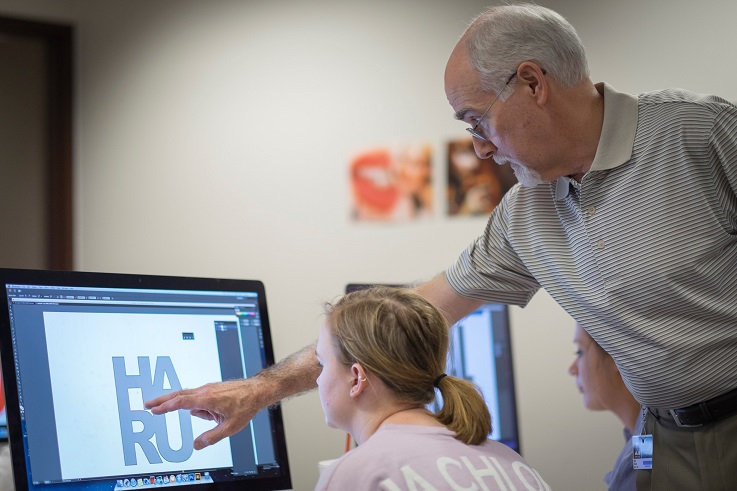Common design studio titles and hierarchy

If you are earning a bachelor’s degree in graphic design, then you may one day work or intern at a design studio or agency. While every studio environment and culture is slightly different, many studios stick to a similar hierarchy when it comes to key roles and responsibilities. The following are some of the common studio job titles you should know.
Studio Manager is typically responsible for day-to-day administrative and technical tasks that ensure a studio runs smoothly. She or he often acts as liaison with designers and clients and assigns work and creative briefs based on projects’ skill level requirements. A studio manager is also in charge of implementing workflow processes to streamline operational efficiency. They may develop quotes for clients and coordinate with printers on production of projects.
Creative Director is ultimately responsible for the quality of creative work that a studio creates. They oversee all projects and provide creative guidance to designers. They are known for offering innovative insights that challenge designers to grow as artists. A creative director is both a leader and a good listener. They are able to inspire their teams and build team morale. As such, most graphic designers aspire to the role of a creative director.
Graphic Designer is likely the title you will have in your first position upon completing a bachelor’s degree in graphic design. Some studios may differentiate job titles between newer versus more experienced designers by including “junior” or “senior” in their title. As a graphic designer, you’ll be responsible for working on a wide range of projects including designing logos, brochures, publications, signage, posters, conference booths, and much more. Graphic designers may also work on digital design projects like websites or landing pages.
Illustrator is responsible for creating unique drawings for various projects including ads, publications, posters, presentations and more. This role may not always be fulfilled by a single individual. Rather, many graphic designers may play the role of an illustrator, as needed, based on project’s needs and their own interest and talent for drawing. Successful illustrators are often known for their unique style and aesthetic and have rich portfolios of work.
Web Designer creates the look and layout of a website. They must possess intimate understanding of user experience and information architecture. They ensure their design is user-friendly by creating easy and logical pathways for users to find the information they are looking for. Web designers may collaborate with writers to populate a site with compelling content.
Developer works closely with web designers to bring their design to life by coding it so that it works as planned across various browsers, desktop and mobile devices. Developers are often involved with site maintenance ensuring that the website is updated and secure. They enjoy problem solving and have patience to work through issues that arise.
At William Woods University, students earning a bachelor of science or bachelor of arts in graphic design, will take ART 423 Real Word Graphic Design Studio. This course allows students to apply their graphic design skills by working with actual clients in the community. Students learn to work as professionals within the creative constraints of the real world to satisfy the needs of their clients. The emphasis is placed on developing successful client relationships, working within budgets and deadlines, and creative problem-solving.

